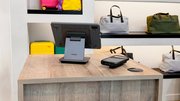Article
Wooing shoppers with personalization
Retailers have realized they must create personalized shopping experiences in order to effectively compete.

July 16, 2013
By Kevin J. Walker, Vice President of Sales and Marketing, Manthan Americas
We are at the beginning of a new era in retail, also known as "the age of the individual shopper." With varied tastes and preferences, the one-size-fits-all strategy is fading fast, especially in the brick-and-mortar space. Retailers have quickly realized they must create personalized shopping experiences in order to effectively compete.
A paradigm shift has occurred in the retail space as retailers turn to technology-driven analytical tools to identify the best product-customer combination and send personalized offers, coupons and promotions to customers. Retail chains are leaving no stones unturned to explore options to maximize their ROI from personalized offers.
Personalization at the POS
It is very clear to retailers that today's consumers love personalization. A recent survey from MyBuys indicated that a record 40 percent of respondents said that they buy more from retailers who comprehensively personalize the shopping experience across channels. Additionally, shoppers love one-on-one personalization at the POS, as indicated by a Syngera survey that revealed that not only would 3 in 4 respondents rather receive personalized coupons than generic, but 62 percent would find the checkout process more enjoyable if they received personalized coupons based on their purchases.
In fact, according to the NCH Annual Coupons Fact report, over the past five years, there has been a 58 percent increase in the redemption of coupons by budget-minded shoppers. This is all thanks to the developments in retail analytics leading to better customer profiling and the growth of digital coupons.
Individualized prices for individualized shoppers
Leading supermarket chain Safeway knows that no two shoppers are the same, and now offers digital coupons and customized deals based on a customer’s buying history. The retailer has also started personalizing pricing on products as a reward for brand loyalty — based on the data collected from the customer’s club card. This signals that price tags in the stores can be replaced with individualized pricing, offered through a website and rung up at the checkout stand when the club card is swiped.
By using data mining tools to identify unique customers at the individual or household level, retailers can rely on actual customer buying behavior rather than the more generic segmentation to target offers.
Personalization on-the-go
Research has shown us that mobile has the potential to offer shoppers the most relevant and unique personalized shopping experience. A recent study by Google indicates that 84 percent of smartphone shoppers use their devices to help them while they’re in a store, 63 percent of smartphone shoppers use search engines to look for promotional offers and 44 percent of smartphones indicated that using a mobile device saves them money.
Soft pretzel chain, Auntie Annie’s, has been taking advantage of the mobile trend to both personalize customer offers and obtain a better measure of its advertising spend. The business launched a mobile advertising campaign during the back-to-school shopping season. This mobile campaign creatively tested different combinations of Auntie Anne’s and Coca-Cola items for purchase at 10 Atlanta-area locations. Each ad unit contained a unique redemption code that enabled the item-level tracking of individual consumer sales and the revenue impact of the promotion. After tapping on the mobile ad, consumers could redeem their coupon at the point-of-sale or save it for later. If consumers chose to save the deal for later, they received an SMS message with a link to the redemption code that could then be used at any time during the promotional period.
Retail analytics: The path to personalization
Since customers are identifiable through loyalty cards and other identifiers, traditional brick-and-mortar retailers are now attempting to personalize their offerings with the help of analytics. We live in an age where everything can be designed to keep the individual customer in mind.
With retail analytics, retailers can collect the information required to chart out personalization programs to increase customer satisfaction. These solutions are no longer just a luxury for large retailers, but are now available to a larger set of retailers who can increase the efficiency of their retail store operations.
Consumers are now making the leap from just conducting transactions to having experiences in the store. These experiences can range from the small and mundane to life-changing milestones when purchasing a product. It is important to remember that consumers want to interact with their favorite retail brands in a way that is seamless, convenient and customized to their own preferences, as well as personally relevant. With the help of retail analytics, retail organizations can quickly and easily collect the data required to carry out the wants and needs of their most loyal customers.
(Photo by USACE.)





